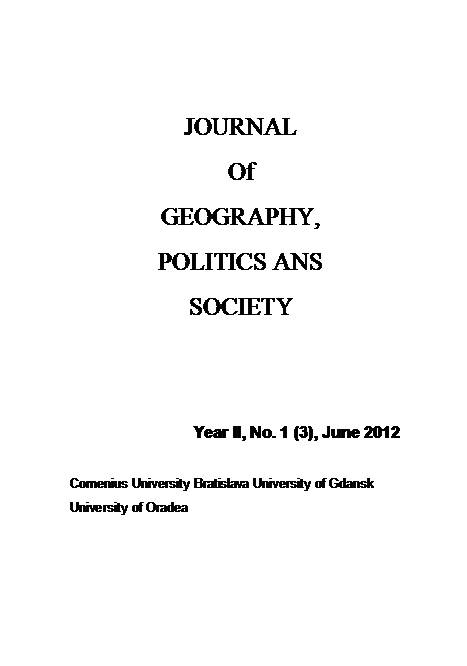Evolution of historical regions, borderlands and borders during last century (1916-2011) at the external eu border corresponding to northern Romanian-Ukrainian sector
Evolution of historical regions, borderlands and borders during last century (1916-2011) at the external eu border corresponding to northern Romanian-Ukrainian sector
Author(s): Alexandru Ilies, Dorina Camelia Ilies, Cezar Morar, Gabriela Ilies, Jan Wendt, Marin Ilies, Grigore Vasile HermanSubject(s): Regional Geography, Historical Geography, Maps / Cartography, History of ideas, Geopolitics
Published by: Wydawnictwo Uniwersytetu Jagiellońskiego
Keywords: Romanian-Ukrainian border; external EU border; territorial systems; borderland
Summary/Abstract: This study aims at an analysis of the political space dynamic and limits, over the last century, on an area corresponding to the current Romanian-Ukrainian border area. It is analysed the impact of the successive changes of the border route and the border’s role over the regional-territorial structures and the corresponding border areas. The sequences of phases of structural political (re)modelling of the analysed geographical area are determined by three major thresholds: the two World Wars and the fall of the Socialism System.Using analytical methods and certified instruments in the scientific literature (from Cartography, Statistics, History etc.) there are compared sets of cartographic materials from various sources, aiming at capturing the major changes over the generated border level system. It have been analysed the borders routes, the sequences of the territorial-political systems, the (re)adjustment of the Historic regional systems, the impact over the communication network, the diminution or extension of the polarization areas of several historic or regional centres.It results a typology specific to the border areas with an increased dynamics, and finally there are identified the most stable and unstable territorial subsystems and border sectors, comparing to the current route of the EU/NATO external border. These results are elements with a high degree of specificity and they can be used in the contemporary strategies for (re)integration and building of the cross border territorial systems.
Journal: Journal of Geography, Politics and Society
- Issue Year: 2/2012
- Issue No: 1
- Page Range: 34-54
- Page Count: 21
- Language: English

